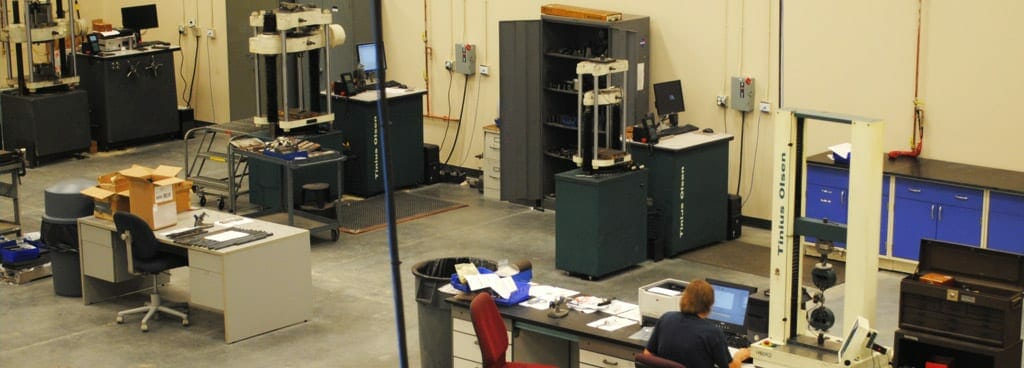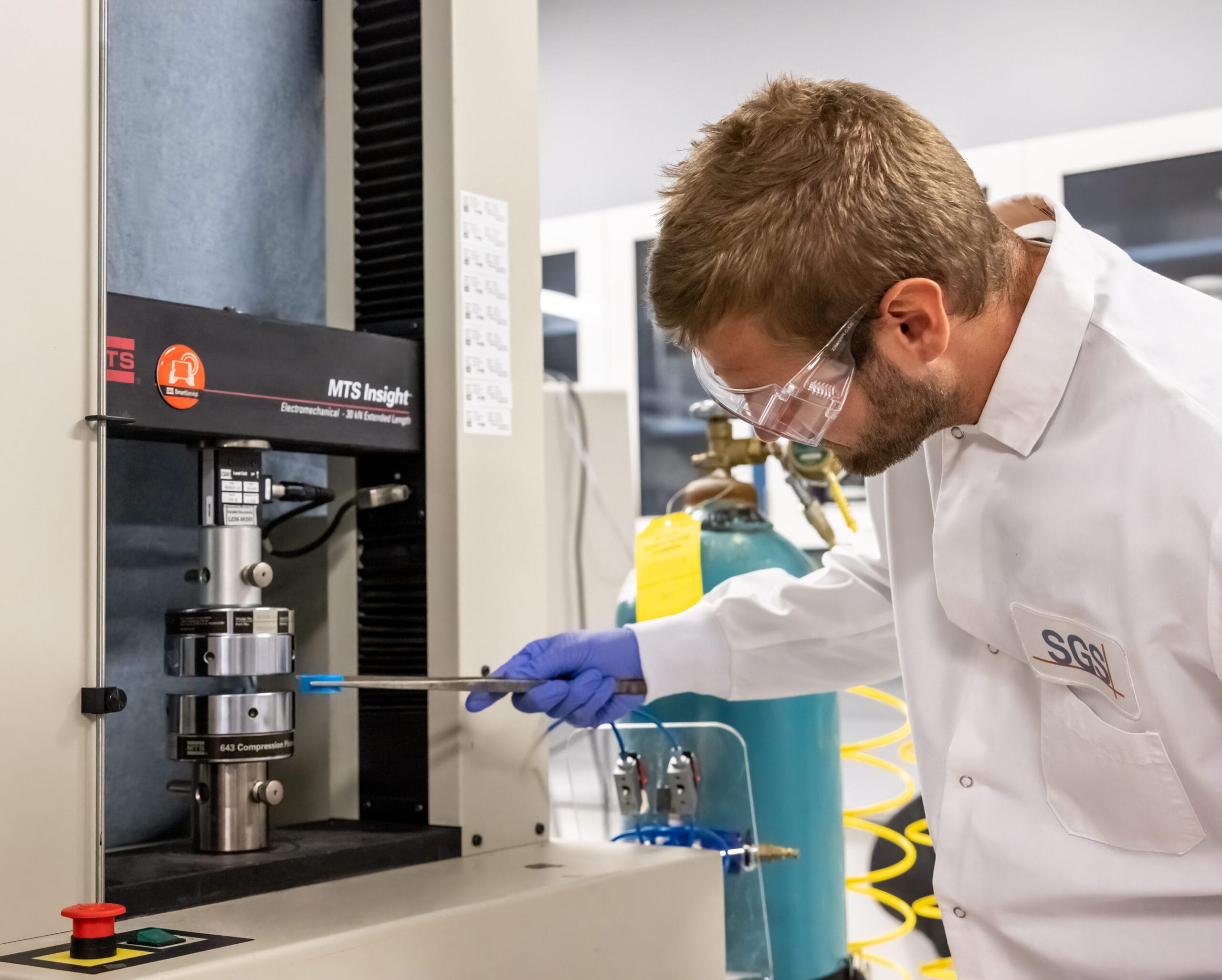Material Testing Lab Proficiency: Raising the Criteria of Project Integrity
Material Testing Lab Proficiency: Raising the Criteria of Project Integrity
Blog Article
Unveiling the Keys of Materials: Innovations in Modern Product Screening
In the ever-evolving world of products science, scientists are regularly looking for methods to unlock the hidden tricks of numerous materials. The quest to understand the homes, actions, and potential applications of products has led to exceptional technologies in modern material testing. From nanotechnology and artificial knowledge to non-destructive testing and high-throughput testing, brand-new techniques are emerging that assurance to change our understanding of products.
Nanotechnology: Enhancing Product Checking Capacities
Nanotechnology has actually transformed material screening by boosting its abilities and permitting unmatched precision and accuracy. With the ability to control and control materials at the nanoscale, engineers and researchers have had the ability to uncover new understandings into the behavior and residential properties of numerous products. This has actually opened an entire new avenue for material testing, making it possible for researchers to delve deeper right into the basic characteristics of materials and discover their possible applications.
Among the crucial benefits of nanotechnology in material screening is its ability to give very specific dimensions. By using specialized nanoscale probes and sensing units, scientists can obtain comprehensive info concerning a material's mechanical, electric, and thermal residential or commercial properties. This degree of accuracy is vital for markets such as aerospace, auto, and electronics, where also the slightest discrepancy from wanted specifications can have substantial consequences.
Moreover, nanotechnology has actually permitted for the advancement of unique screening strategies that were previously unthinkable. Scanning probe microscopy methods, such as atomic force microscopy and scanning tunneling microscopy, allow scientists to visualize and manipulate materials at the atomic degree. This unprecedented level of control and monitoring has actually led the method for innovations in recognizing material actions and making ingenious materials with customized residential or commercial properties.
Artificial Intelligence: Changing Product Evaluation
The combination of man-made knowledge has produced a transformation in product analysis, significantly enhancing the speed, accuracy, and efficiency of the procedure. With the capacity to analyze huge quantities of data in real-time, expert system (AI) formulas can swiftly determine patterns, anomalies, and correlations that might or else go undetected by human analysts. This allows researchers and researchers to get a much deeper understanding of products and their buildings, leading to the growth of better and new products for various applications.
AI-powered material analysis additionally permits for the forecast of material habits under various conditions, conserving significant time and sources in the testing phase. By simulating various scenarios, AI algorithms can properly predict just how materials will certainly perform in various environments, allowing engineers to make enlightened decisions about their suitability for details applications.
In addition, AI algorithms can maximize material screening processes by automatically readjusting criteria and experiment styles based on real-time comments (material testing lab). This not just accelerates the testing procedure however likewise makes sure that the maximum amount of details is acquired from each experiment, bring about more dependable and detailed results

Non-Destructive Screening: Exploring Materials From Within
Non-destructive testing methods use a distinct means to discover the internal framework and residential or commercial properties of materials without causing any kind of damage or modification. These techniques have actually transformed the area of product testing by allowing researchers and designers to examine products from within, without jeopardizing their honesty. Non-destructive screening methods use numerous technologies and approaches to examine materials and provide valuable understandings into their composition, flaws, and performance.
One extensively this article made use of non-destructive testing strategy is ultrasonic testing, which involves sending out high-frequency sound waves via a material and examining the mirrored waves to establish its internal structure. This technique is commonly made use of to detect imperfections, such as splits or voids, in metals, compounds, and concrete. An additional technique, understood as X-ray radiography, uses X-rays to create photos of the interior attributes of a product, making it specifically helpful for inspecting welds and discovering hidden defects.
Various other non-destructive screening techniques include magnetic particle screening, which uses magnetic fields to determine surface and near-surface flaws in ferromagnetic products, and swirl existing screening, which utilizes electromagnetic induction to find flaws in conductive products. These methods, along with others like thermography and visual evaluation, supply important details about the structural honesty and top quality of products, guaranteeing their reliability and safety in different applications.
Non-destructive testing is particularly vital in industries such as aerospace, vehicle, power, and construction, where the efficiency and integrity of products are of utmost relevance. By enabling thorough product evaluation without causing damages or alteration, non-destructive testing methods play a vital role in ensuring the quality and toughness of products in a vast array of applications.
High-Throughput Screening: Accelerating Product Exploration
High-throughput testing techniques have revolutionized the procedure of product exploration by increasing the recognition and evaluation of new products. This technique enables scientists to swiftly screen a huge number of products, making it possible for the recognition of appealing candidates for more examination.
High-throughput screening entails using automated robotics and systems to execute experiments on a big range (material testing lab). This enables scientists to rapidly evaluate a wide variety of products under various problems, such as stress, temperature, and structure. By examining the resulting information, scientists can determine materials with preferred buildings, such as high toughness, conductivity, or thermal stability
One of the essential advantages of high-throughput testing is its ability to accelerate the discovery of new products with improved properties. Traditional approaches of material discovery often include experimentation, which can be time-consuming and inefficient. With high-throughput screening, scientists can systematically explore a substantial range of products in a fraction of the moment, significantly accelerating the discovery procedure.
Moreover, high-throughput testing can additionally supply important understandings right into the underlying structure-property partnerships of products. By checking a lot of materials with differing make-ups and structures, researchers can better comprehend exactly how different aspects affect product properties. This expertise can after my sources that be utilized to develop and optimize materials with particular homes for different applications, such as power storage, electronics, and healthcare.
Advanced Simulation Techniques: Forecasting Product Performance
Advanced simulation strategies play a critical function in anticipating the efficiency of products in numerous applications. These techniques entail using computer models and mathematical algorithms to imitate the habits of materials under various conditions. By replicating the actions of materials at the atomic and molecular degree, scientists can obtain important understandings right into their mechanical, thermal, and chemical residential properties.
One of the key benefits of advanced simulation techniques is their capability to anticipate product efficiency before physical testing. This not just saves time and resources yet also allows scientists to discover a wider series of materials and layout criteria. For example, in the field of products design, simulations can help determine the optimal composition and structure of a product to accomplish specific properties.

Along with forecasting product efficiency, these simulation strategies likewise help in comprehending the hidden mechanisms that control material behavior. By assessing the simulation results, researchers can acquire understandings right into the basic concepts that dictate the residential properties and performance of materials.
Verdict
In verdict, the advancements in product testing techniques have considerably boosted our understanding and evaluation of check these guys out various materials. Nanotechnology has actually enabled for enhanced capacities in screening and manipulating materials at the nanoscale. Non-destructive testing has actually allowed us to discover the inner buildings of products without creating damage.
The quest to comprehend the properties, behavior, and potential applications of products has led to impressive innovations in modern product screening. These methods have reinvented the field of product screening by making it possible for designers and researchers to check out materials from within, without jeopardizing their honesty. By checking a big number of materials with varying make-ups and frameworks, scientists can much better recognize how different aspects influence product residential or commercial properties. In the field of materials design, simulations can aid determine the optimum composition and structure of a product to accomplish specific residential or commercial properties.
In verdict, the improvements in material screening techniques have considerably enhanced our understanding and evaluation of numerous materials.
Report this page